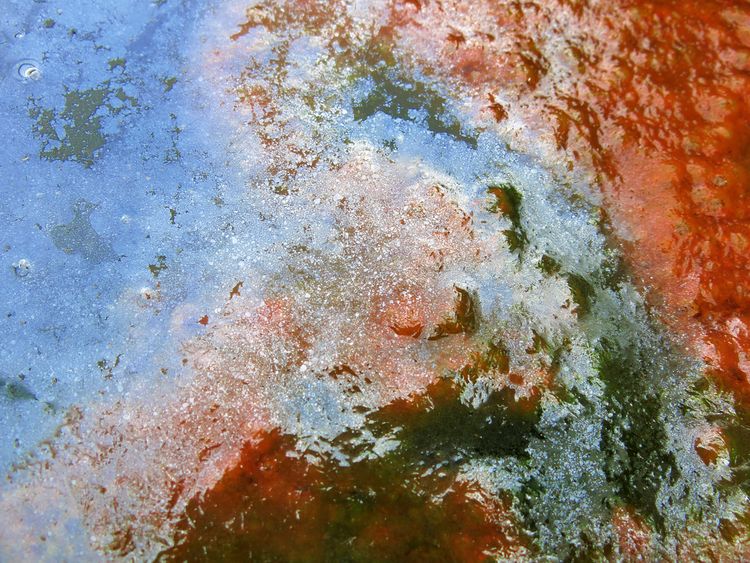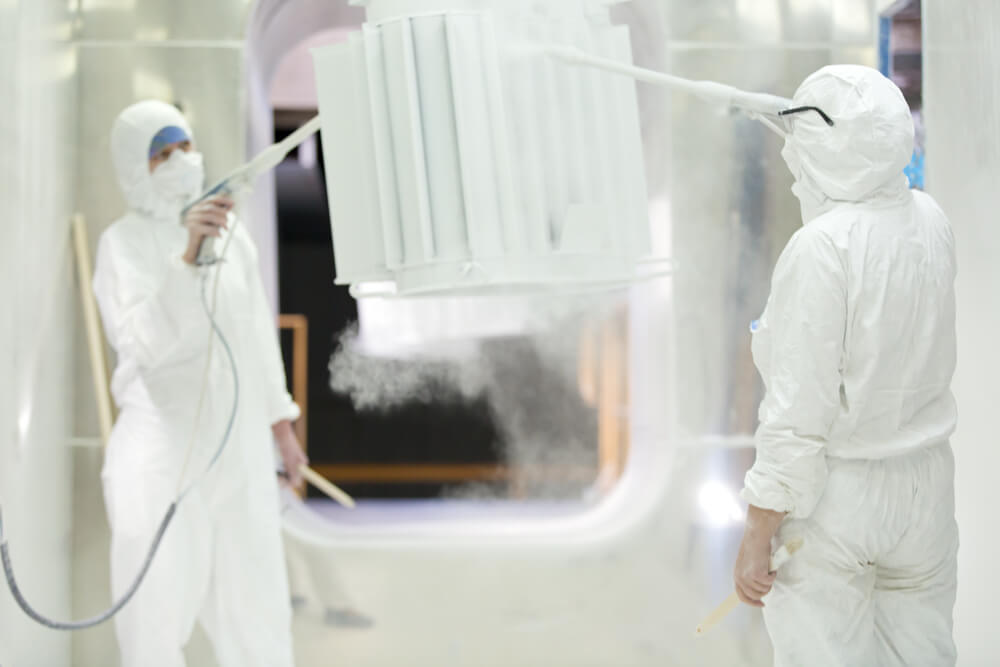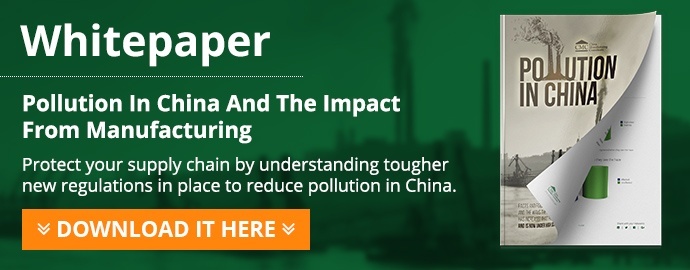In a move long overdue, China has made environmental compliance an integral part of its initiative to grow its economy, improve quality of life, increase manufacturing efficiency, and help create a better work environment for everyone.
This article highlights how Chinese factories that find themselves struggling to reduce emissions from their paint shops can take actionable steps to maintain environmental compliance in the wake of new environmental regulations.
The Dangers Of Turning A Blind Eye To Manufacturing Pollution
Billowing smokestacks and chemical sludge being dumped into water are usually the first images people have when thinking about industrial pollution.
Yet paint shops contribute significantly to air and water pollution as they are used for all kinds of production.
Excess paint will be put into a landfill or it will find its way into rivers and lakes and eventually into water supplies.
VOCs (Volatile Organic Compounds) can pollute the air.
Many of these compounds can cause cancer, create respiration problems and can weakened immune systems, especially in children.
So unsurprisingly, the Chinese government is putting limits on the levels of VOC and water emissions that can come from a factory’s paint shop.
Before going further, let’s define the paint shop and its processes.
Paint shops will include:
- Phosphate processes
- Anodizing
- Platting
- Electrocoating
- Powder painting
- Liquid painting
While the processes may be different, all of these fall under the designation as paint shops and are subject to similar regulations.
4 risk factors in your supply chain caused by pollution
So, how can Chinese factories efficiently and cost-effectively reduce admissions from their paint shops?
The Road To Ensuring Environmental Compliance In Paint Shops
1 - A factory should know exactly what its pollution levels are
It is not difficult to determine, but takes time to gather the data.
The factory needs to measure the VOCs (volatile organic compounds) that are being emitted into the air.
The process is simple: measure VOCs in the paint and multiply by much paint is used.
Once the paint dries all the solvents go directly into the air.
2 - Determine how much of the excess solids from the paint are going into the water

Conceptually this is easy: whatever paint is not on the product is excess.
This calculation is a little more difficult than the air emissions.
Take the weight of the product before and after painting and subtract the second from the first to determine transfer efficiency.
The result is how many liters of paint you are putting on the product is on the product.
The remainder is waste that was applied, but did not say is waste and must be removed.
3 - Discuss environmental regulations with the local government and how the factory is complying to them
Having this discussion creates buy-in with the local government and together with the factory they can create a joint plan to solve the problem before it starts.
4 - Start cutting pollution
The most cost-efficient method is to improve transfer efficiency.
By improving the coating processes, a factory can reduce the liters of paint or the kilograms of powder paint by 30% to 90%.

The key is putting more solid content on the product and by not using more product you reduce the liters you need to coat.
This not only significantly cuts down on pollution, but saves thousands of dollars on material costs.
The math is simple: instead of using 3 liters of paint per product, the factory will only use 1.
That’s a two-thirds reduction in material costs.
If the factory is using solvent-based paints then going to water base paint or powder paint can really help raise the efficiency.
Changing anodizing and phosphating to non-heavy metal coating is also simple and effective.
Lead-free electrocoat is well known and is an excellent way to reduce pollution and improve efficiency.
This keeps bad chemicals from the waterways and airways, saves money, and helps factories avoid shutdowns from non-compliance.
Conclusion
Factory leaders need to be careful since some areas may require additional equipment for air abatement and water treatment.
These technologies have been used around the world for 30-50 years so it is not difficult to find a product to fit specific needs.
The key is to be proactive and take action to solve the problem before the local government either forces the factory to comply or shuts it down.
Both of those options are more expensive and more disruptive than solving the problem early and in-house.
What are your thoughts on manufacturing in China cleaning up its act?
How has your factory adapted to new EPL regulations?
Let us know in the comments section below





